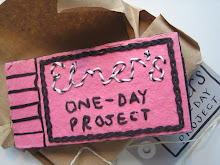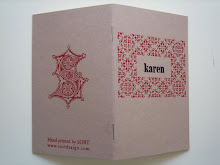ALONENESS
FICTION AND MEMORY
OBSERVING A RITUAL vs. OBSERVING BEHAVIOUR
ESTABLISHING A GEOGRAPHICAL NETWORK FOR THE BODY
PERFORMING THE REAL THROUGH A FICTIONAL CHARACTER
Two poet-artists, Ryan Ormonde and Karen Sandhu, explore ideas of 'aloneness' in a parallel practice of research and development.
For Ryan 'the intention is to establish a geographical network for the body in a practice of aloneness' - a post-Situationist activity of 'silent poetry' that in itself takes the form of discovering and remembering an area local to my home. This practice is retrospectively documented in writing in the form of a journal.
For Karen, 'the project is intended to be a performance performed through a fictional character but based on the experiences of the real'. Her character 'in the eyes of society, is a normal individual. However, society does not know that every day she is performing.' Karen's documentation will take the form of a series of visual images and sound recordings and a book work.
RYAN ORMONDE
The site for this practice is an area around my home, its boundaries defined by the time it takes to walk from my home and back again within the daily timeframe, incorporating resting times of any duration and walking routes that may turn any which way. The daily timeframe is a four hour block from 9am to 1pm and a three hour block from 2pm to 5pm. This constitutes one day of the practice.
At first the activity of this practice is an act of discovering and remembering. No methods of documentation are used beyond body memory, but after a day is completed a journal entry is written. The objective is to cover the entire available public space. Every potential route and resting place is to be found and remembered. The intention is to establish a geographical network for the body in a practice of aloneness.
Once this network is acquired the practice continues and develops informed by the following questions:
What do you do in aloneness?
Or
What does aloneness do?
KAREN SANDHU
A.Lone, in the eyes of society, is a normal individual. However, society does not know that every day she is performing.
A.Lone completes numerous everyday tasks on her own:
1. Brushing teeth 2. Getting dressed 3. Eating porridge 4. Reading 5. Walking to the bus stop 6. Picking groceries 7. Writing 8. Cooking dinner 9. Editing 10. Sleeping
A.Lone is a fictional character devised for the purposes of this artistic practice. The character provides the space through which I will perform the concept. All tasks will be timetabled, completed, recorded and edited by me. The bookwork will also be written and produced by me.This four week project will be documented through a series of visual images and sound recordings. This is to exist as film footage. Each of the ten tasks will be recorded and edited over the four week period.
The writing (one of the ten tasks) that A.Lone is to complete will be based on writing through her memories and feelings associated with each activity and will be shaped by her reading of source materials – factual and fictional – based on the ideas of others on the subject of ‘alone’. These source materials will be selected throughout the four week period. The writing to come out of this will be documented as a bookwork which engages directly with the film. Consequently after its performance, the project is to exist in the form of both film and bookwork. Each being referential to each other.
The A.Lone Project is not about indulging in the notion of being separate, independent or different from others; nor is it about exploring the idea of loneliness, a feeling often associated with the word ‘alone’; nor is it fuelled by self-obsession; rather the project stems from the artistic technique of ‘defamiliarization’ and enhancing one’s perception of the familiar. However, to go beyond this 20th century idea, the project is intended to be a performance performed through a fictional character but based on the experiences of the real. It blurs the lines of fact and fiction which is also the very nature of the source material to be used as part of the project. It intends to provoke the following questions:
In order for the everyday to be ‘defamiliarized’ in an already exaggerated 21st century, does the ‘real’ need to be presented as ‘unreal’?
Or
Does the everyday need to be fictionally distorted or exaggerated in order to experience it anew?






















![five [yellow] poems](https://blogger.googleusercontent.com/img/b/R29vZ2xl/AVvXsEj7pWNS6-0OLKnVlSKvxNZqflLcymygEpr7SKNZ6DxOw2ujEBwCNVmJyjSNWrwfRduPucxM75xqy150M74MeXwHdLaK8OEy3vX-qNnWPPAj4JQiJA_hiqwlqGsxHqQ9Lzf4ANVHutXo7jRQ/s220/book2.JPG)














